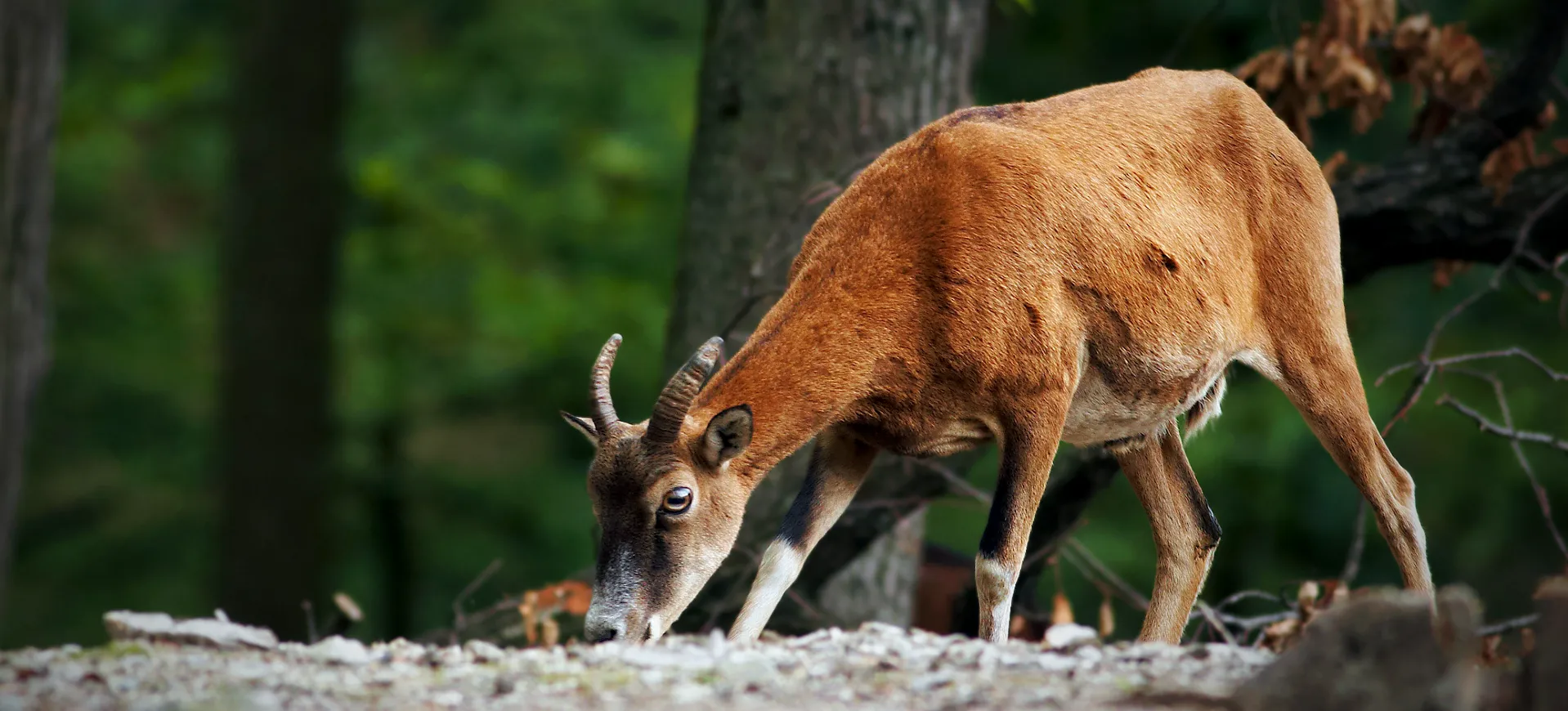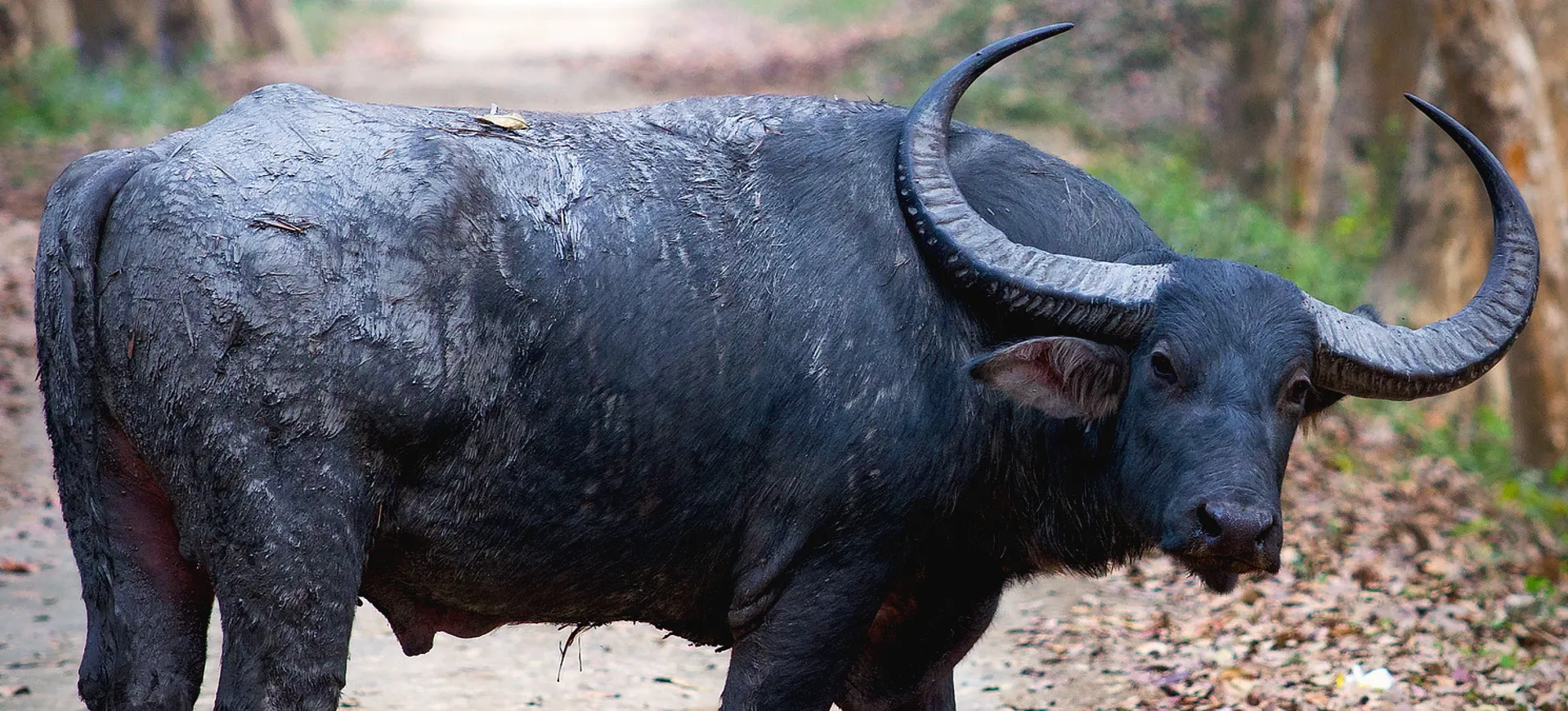Overview
The Aoudad, also known as the Barbary sheep, is a unique species of caprid native to the rocky mountains in North Africa. This intriguing species has some features akin to both sheep and goats, a feature that underscores their unique evolutionary pathway. They exhibit a stocky, muscular build designed for navigating the steep, rocky terrain of their native habitat, and their coloration varies from a light sandy brown to darker shades, providing excellent camouflage against the backdrop of their environment.
Aoudads have a distinctive appearance, characterized by a rugged, shaggy coat that’s thicker and longer on the neck and the chest, especially in males. Both sexes possess horns, although more substantial in males, reaching lengths up to 34 inches. These horns sweep outward, backward, and inward, with pronounced rings along their length. As perfectly adapted mountain dwellers, they have special padded, concave hooves that provide superior grip on rocky surfaces and uneven terrain.
The Barbary sheep are known for their exceptional agility, ability to go without water for long periods, and keen eyesight. They are predominantly crepuscular, most active during the early morning and late afternoon, and tend to rest in the shade during the hottest parts of the day. This species is highly adapted to survive in arid, desert-like conditions and mountainous environments, exhibiting behavioral and physiological adaptations to handle such harsh environments.
Taxonomy
Kingdom
Phylum
Class
Order
Family
Genus
Species
Type
Current distribution:
Originally endemic to North Africa, the Aoudad has been introduced to several regions outside its native range. Wild populations can be found in North African countries such as Morocco, Algeria, Tunisia, Libya, and Egypt. However, due to human intervention, they can now also be found in Southern Europe, namely Spain, and the Southwestern United States, specifically in Texas and New Mexico.
Their presence in the Southwestern United States resulted from their introduction for hunting purposes in the mid-20th century. Since then, they have established significant feral populations in the rugged, arid landscapes reminiscent of their original habitat. The adaptability of the Aoudad has allowed it to thrive in these new areas despite the vastly different ecosystems.
Physical Description:
Aoudads are robust and well-muscled, presenting a sturdy physique perfectly suited for a challenging mountainous lifestyle. Their body is covered with a thick, woolly coat that’s light to reddish-brown, providing both insulation against cold weather and a camouflage mechanism. The coat is longer on the neck and the front of the body, forming a characteristic “bib” or “mane” hanging down from the throat and upper chest.
The most striking feature of the Aoudad is its magnificent, V-shaped horns, which are present in both males and females, though larger and more pronounced in males. These horns, characterized by annular rings and a backward arch, can reach up to 34 inches in males. The females’ horns are noticeably slimmer and shorter, measuring between 13 to 16 inches. Their specially adapted hooves have a soft center and hard edges, which helps them grip and climb steep, rocky slopes.

Lifespan: Wild: ~15 Years || Captivity: ~23 Years

Weight: Male: 308-330 lbs (140-150 kg) || Female: 88-198 lbs (40-90 kg)

Length: Male: 59-69 in (150-175 cm) || Female: 55-63 in (140-160 cm)

Height: Male: 31-40 in (80-100 cm) || Female: 28-31 in (70-80 cm)

Top Speed: 30 mph (48 km/h)
Characteristic:
Native Habitat:
The Aoudad’s native habitat is the arid, rocky mountainous regions of North Africa, where they have adapted superbly to the harsh conditions. They inhabit a variety of terrains, including dry, mountainous areas, canyons, and even desert outskirts. Their preferred environment is typically characterized by steep, rocky areas with plenty of hiding spots and high vantage points, useful for evading predators and foraging for food.
Aoudads are incredibly hardy and can endure extreme temperatures, from cold to searing heat. They are predominantly found at altitudes ranging from sea level to 4,000 meters, indicating their versatility and adaptability to various environmental conditions. This high-altitude preference provides them cooler temperatures during hot summers and an excellent vantage point to spot potential predators.
Biomes:
Biogeographical Realms:
Continents:
Diet:
Diet & Feeding Habits:
As an ungulate mammal, the Aoudad primarily follows a herbivorous diet. A diet of grasses, shrubs, leaves, and twigs characterizes their eating habits. Their specially adapted, flexible lips aid them selectively foraging for the best plants and leaves, including some varieties that are too tough for other animals to consume. This selective foraging is a key adaptation to their often nutrition-poor environments.
Thanks to their physiological adaptations, aoudads can extract most of the necessary moisture from their food, allowing them to go without water for extended periods, sometimes for many days or even weeks. During drought periods or particularly arid environments, Aoudads have been observed consuming moisture-laden plants and succulents that help them meet their water requirements.
Mating Behavior:
Mating Description:
Aoudad mating behavior is seasonal, typically occurring between September and November. Males engage in aggressive displays and combats to win mating rights with females, showcasing their strength and endurance. These displays often involve loud, resonant calls, neck wrestling, and horn clashing.
The female, or ewe, gives birth to a single lamb after a gestation period of about 160 days. This usually occurs in a secluded spot, and the mother stays with the newborn for a few days before returning to the herd. The lamb starts to follow its mother after about one to two weeks and can navigate the steep terrain of its environment within a few hours of birth.
Reproduction Season:
Birth Type:
Pregnancy Duration:
Female Name:
Male Name:
Baby Name:
Social Structure Description:
Aoudads are social animals and typically live in small herds of about 20 individuals, although larger groups can be formed in suitable conditions. The herd usually consists of females and their offspring, with mature males often forming separate bachelor groups or leading solitary lives. Male Aoudads will join the female herds only during the mating season.
A strong social hierarchy is maintained within the herd, primarily based on age and size. They communicate through various vocalizations, body language, and scent markings. During the day, Aoudads rest in the shadow of rocks and caves to avoid the heat, while the late afternoon and dawn are their most active periods.
Groups:
Conservation Status:
Population Trend:
The Aoudad population has experienced a decline in its native range due to several factors. Habitat loss and fragmentation, largely due to agricultural expansion, urbanization, and overgrazing by domestic livestock, have significantly reduced their numbers. Furthermore, they are hunted for sport, meat, and their distinctive horns, further contributing to the population decline.
The existing population is highly fragmented and faces the risk of local extinction due to their isolation and limited genetic diversity. However, populations in non-native regions such as the United States and Spain are thriving due to the lack of natural predators and the favorable, similar-to-native conditions in these areas.
Population Threats:
The primary threats to the Aoudad population include habitat loss and fragmentation caused by agricultural expansion and overgrazing. Hunting, both for sport and illegal poaching, has also significantly contributed to the decrease in their numbers in the wild. Climate change and related drought conditions may pose future threats, exacerbating the challenges to their survival.
Invasive Aoudad populations, particularly in the United States, also indirectly threaten native species by competing for limited resources and spreading diseases. These non-native populations are often difficult to control and manage, negatively impacting local ecosystems and biodiversity.
Conservation Efforts:
Conservation efforts for the Aoudad primarily revolve around habitat protection and regulation of hunting. This includes establishing protected areas in their native range to preserve their natural habitat and regulate human activity. In some areas, regulations have been implemented to control hunting and poaching.
Additionally, captive breeding programs have been implemented in several zoos across the globe to help maintain and increase the Aoudad population. Efforts are also being made to better study and understand this species’ biology and ecology, which can guide effective conservation strategies in the future.
Additional Resources:
Fun Facts
- Aoudads can survive without water for incredibly long periods, obtaining the necessary moisture from the plants they eat.
- They are exceptional climbers, with their specially adapted hooves enabling them to easily navigate steep and rugged terrain.
- Both male and female Aoudads have horns, though they are larger and more impressive in males.
- Despite being native to North Africa, Aoudads have established feral populations in the United States and Spain.
- They can jump over six feet from a standstill.
- Newborn Aoudads are able to follow their mother over their rocky habitat within a few hours of birth.
- They have a “bib” or “mane” of long hair on their throat and chest, which is more pronounced in males.
- Aoudads rest in the shade during the heat of the day and are most active during the cooler morning and evening hours.
- Their primary predators are leopards, caracals, and humans.
- Aoudads have a lifespan of up to 20 years in the wild and even longer in captivity.




















































































